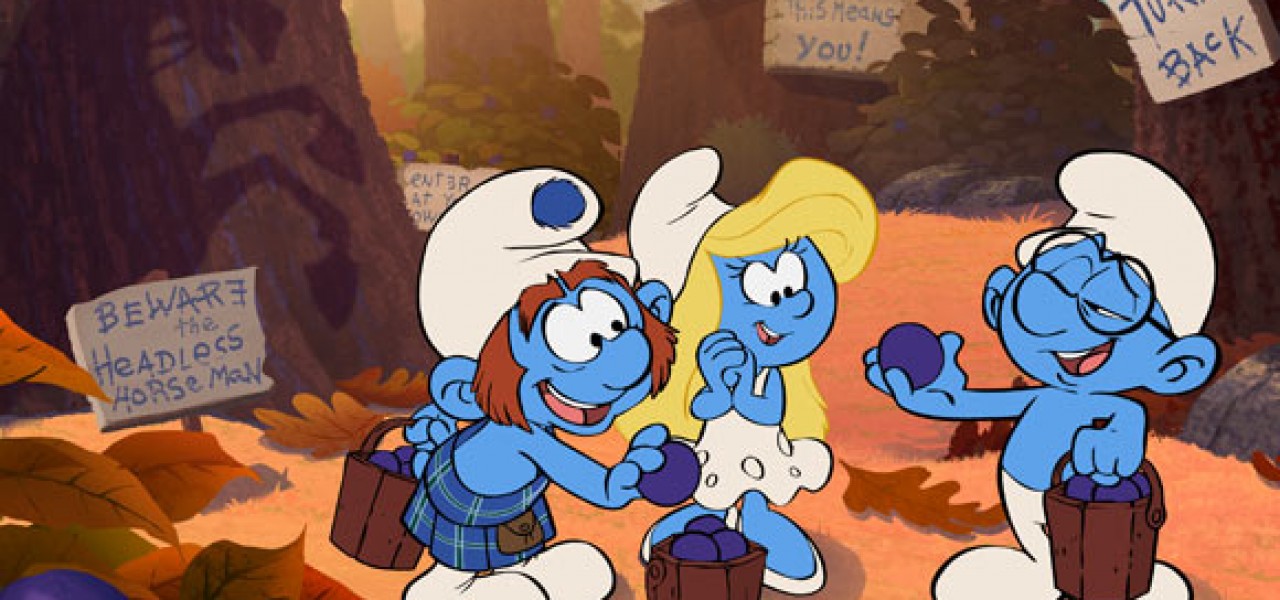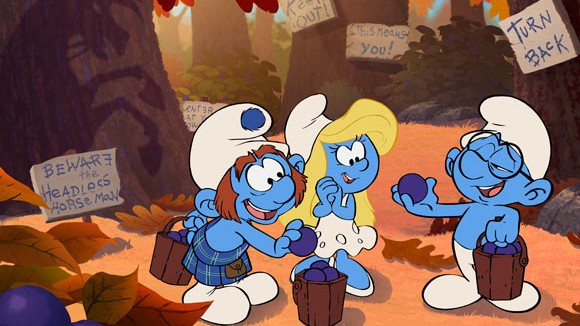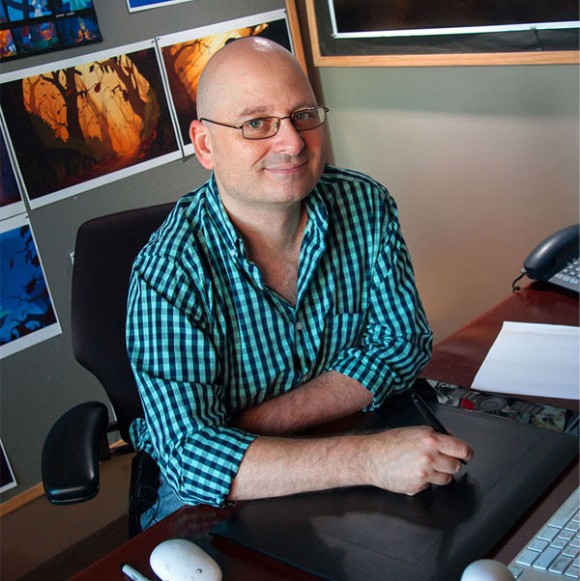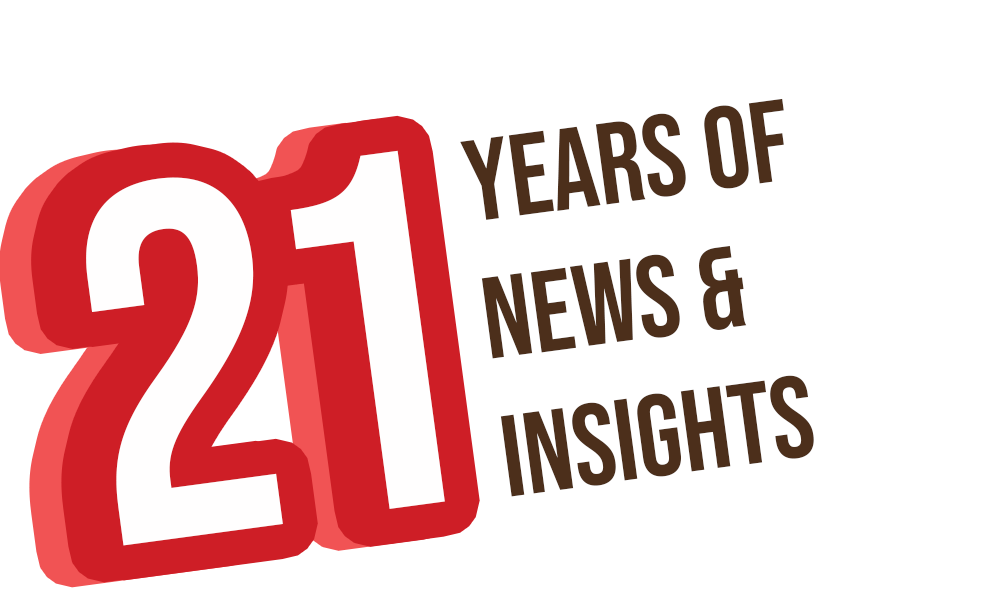

Director Stephan Franck Returns “The Smurfs” To Their Hand-Drawn Roots

In The Smurfs: The Legend of Smurfy Hollow, the new 22-minute mini-movie by Sony Pictures Animation, competition gets the best of Brainy Smurf and Gutsy Smurf and lands them in trouble with not only Gargamel but also the mysterious Headless Horseman who roams the nearby Smurfy Hollow. Presented as a supplement to the recent CGI/live-action film series, Smurfy Hollow bookends its nineteen minutes of traditional animation with 3 minutes of the more familiar CG versions of the characters.

“The movies are hybrid films that focus on the human characters as much as the Smurfs,” Stephan Franck, director of Smurfy Hollow (pictured above), told Cartoon Brew. Smurfy Hollow, however, offers “a chance to refocus solely on the Smurf characters, more in the spirit of the books.”
While The Smurfs were popularized by their animated television series produced by Hanna Barbera from 1981 to 1989, the were originally created as the serialized comic strip Les Schtroumpfs in 1958 by Belgian cartoonist Peyo. Franck, who grew up in France reading the book collections in their original French language, says, “I have to admit The Smurfs had fallen off my radar,” but he warmed up quickly because of his childhood familiarity with the little blue creatures. “I knew these characters.”
Those expecting a stylistic retread of the original cartoon will be pleasantly surprised, as Smurfy Hollow’s animated performances and visual styling are significantly higher end than your usual Saturday Morning cartoon fare. “We really wanted to showcase the quality of the animation. We didn’t want the 2D to look like a poor man’s 3D.” While the Sony studio created the CG segments, the animation was produced by Sergio Pablos Animation in Madrid by way of Duck Studios in Los Angeles.
In the search for a production studio to handle the traditional work, there were “many contenders” and SPA was chosen for their “raw quality of work” and connection to the “European style” that was considered complementary to the subject matter.

Due to the expense of digital equipment like Cintiqs and the relative difficulty to do cleanup with a stylus, the animators at SPA employed original traditional animation production techniques, i.e. pencils and paper. For the few on the production who did animate using digital methods, Franck explains, their drawings would have to be printed out and re-pegged onto paper before being sent to cleanup. The result is consistently solid animation and subtle characterizations that generally come with well-produced short subjects.
Smurfy Hollow Pre-production gallery
- Color script establishes the color arc of the short film and how it relates to the story.
- Color script establishes the color arc of the short film and how it relates to the story.
- Concept painting establishing the design, look and feel of the scary forest location.
- Concept painting establishing the design, look and feel of the scary forest location.
- Concept painting establishing the design, look and feel of the daytime happy forest.
- Tonal study of the campfire set used in the beginning of the film.
- Character turnaround model sheet for Smurfette that animators use as a reference when animating the character.
- Rough character design of the Headless Horseman.
- Character turnaround model sheet for Brainy that animators use as a reference when animating the character.
- Early concept design drawing of the stage area in the center of the Smurf village.
- Early concept painting of Smurf village, used to help establish the general look and feel of the film.
Franck is an industry veteran whose credits include films like An American Tail: Fievel Goes West, Balto, Space Jam and The Iron Giant. “I cried tears of blood to learn to draw well enough [to be an animator],” Franck says.
Like many animators whose professional experience traces back to the pre-digital world of the Eighties and early-Nineties, he has his own opinions regarding the animation industry’s fundamental abandonment of traditional techniques. Franck believes that animation is unlike live-action filmmaking, which has steadily evolved its look with each passing decade. Hand-drawn animation got to the 1990s and stayed there. “The visual paradigm of 2D in the 1990s had been ubiquitous with the films and DVD sequels—regardless of story quality and animation, we had already seen this before.”
As a first time director helming an installment of a fifty-year-old franchise, Franck’s approach, from the animation to the voice work was to remain “natural” and “honest”. He worked with production designer Sean Eckols to create a look that is graphically refreshing while remaining true to the source material. This approach extended to the storytelling as well: “The Smurfs stories are not sugarcoated,” Franck says. “They have individual struggles, they have flaws, petty jealousies, egos and they crave approval. [However], at the end of the day, they are a family. I wanted to reconnect to that.”
The Smurfs: The Legend of Smurfy Hollow is available on DVD for $4.99 at Amazon.

.png)










